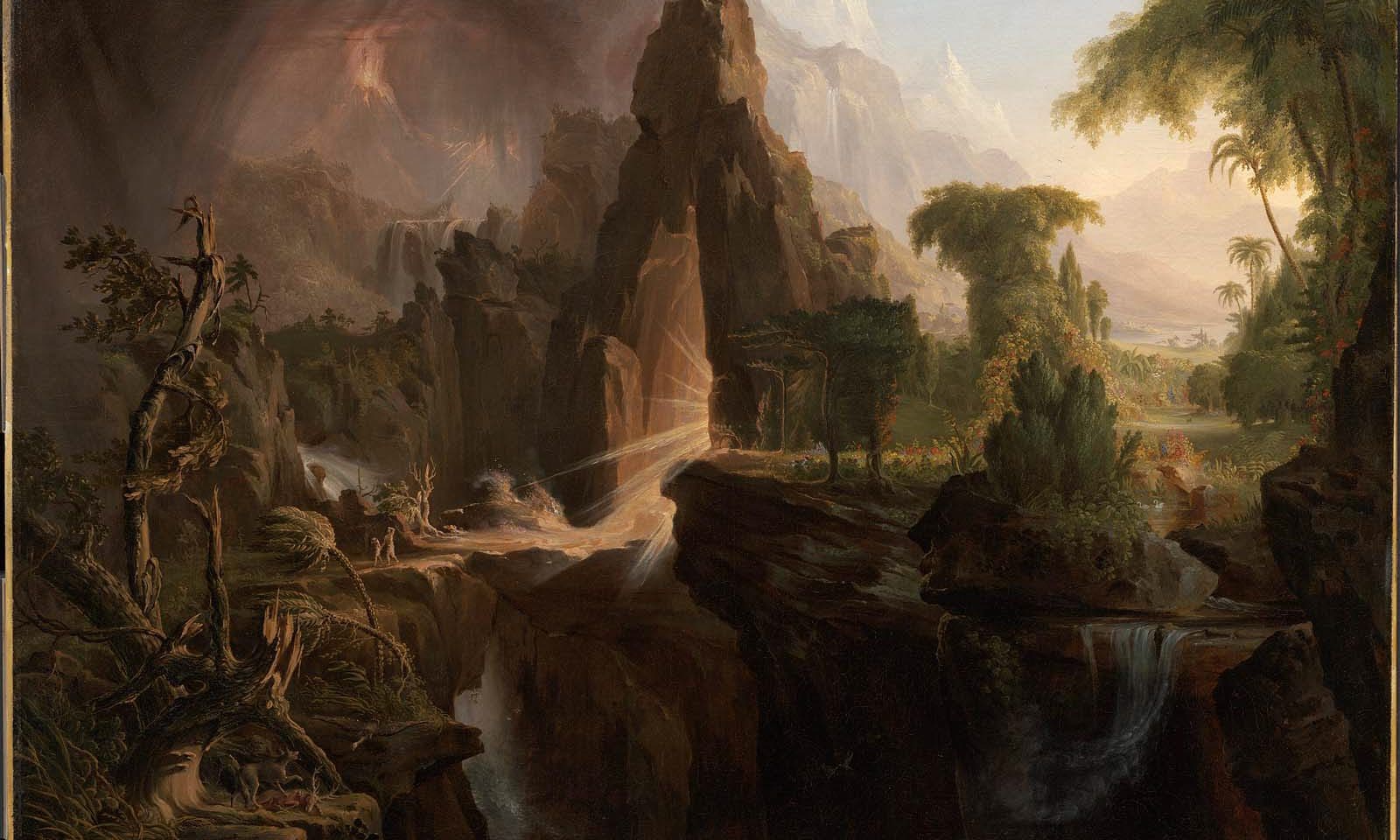For a great many years, man has searched high and low for the ancient garden of Eden. And while numerous theories abound, its precise location remains elusive. It causes one to wonder if this garden of God will ever be found.
Where is Eden?
The Biblical, geological, and geographical evidence all seem to suggest that this original garden is truly forever lost. As many theologians and Biblical creationists have pointed out, the Genesis Flood of Noah’s day, which was nothing less than global in extent (Genesis 7:19-21; 2 Peter 3:5-7), completely devastated and entirely rearranged the topography of the earth. So Eden, wherever it was, is “probably buried under kilometers of sediment.”[1]
In addition, Genesis describes a river flowing out of Eden which divided into four individual rivers (Pishon, Gihon, Hiddekel/Tigris, and Euphrates). So obviously, “Any proposed location for Eden must include four rivers originating from one source. Today, there are only a couple of examples of two rivers originating from the same lake or spring (e.g. Isa Lake in Yellowstone National Park (USA), because it sits on the continental divide, drains in one direction to form the Lewis River, which flows toward the Pacific Ocean, and in the other direction to form the Firehole River, which flows toward the Gulf of Mexico).” [2] Significantly, not even Mesopotamia (where many believe Eden is) contains one river splitting into four. [3] Furthermore, as Lita Sanders and Robert Carter confirm, “Contrary to common opinion, the Tigris and Euphrates of Genesis 2 cannot be the modern rivers flowing through Syria and Iraq today, because they do not share the same source.” [4]
“Since the single river coming out of Eden breaks up into four rivers, we know that Eden must be higher than the surrounding region—perhaps much higher.”
Robert Carter & Lita Sanders
Interestingly, Ezekiel also uses “buried” imagery to describe Eden’s destruction. In Ezekiel 31:18, God says to Egypt, “To which of the trees in Eden will you then be likened in glory and greatness? Yet you shall be brought down with the trees of Eden to the depths of the earth; you shall lie in the midst of the uncircumcised, with those slain by the sword.” All evidence points to the utter ruin of Eden.
Modeling Eden
Although it seems likely that the Garden of Eden won’t be excavated by archaeologists any time soon, “If we tease out all the geographical clues possible from Genesis 2,” observes Sanders and Carter, “we can arrive at a rough model for Eden. Since the single river coming out of Eden breaks up into four rivers, we know that Eden must be higher than the surrounding region—perhaps much higher. There is etymological evidence for this. The name ‘Pishon’ means ‘bubbling’, and ‘Gihon’ means ‘bursting forth’.[5] Since all four rivers share the same source, this cannot be describing the river flowing out of Eden. It must be describing something about the rivers after they divided and went their separate ways. So it might indicate that the rivers flowed fairly rapidly, which may indicate a significant drop in elevation. We cannot be certain, but the language clues are interesting.”[6]
Furthermore, “A mountain location would also explain how there was apparently only one entrance to Eden that needed to be guarded (Genesis 3:24). All other routes could have been impassable due to the steepness of the terrain at other points.”[7] This may be one of the reasons why many scholars think that Eden was located atop a mountain.


Eden as a Mountain Temple
Another reason might be that Ezekiel 28, which is full of Edenic imagery, refers several times to the “holy mountain of God.” It also makes sense of Isaiah’s Edenic allusions which identify the future Eden with the mountain of God—which is Mount Zion, the place where God dwells on earth (cf. Isaiah 11:6-9, 65:25; Ezekiel 28:13-16).
Significantly, we see this garden-mountain-temple theme outside of the Bible as well. In fact, this fits the later Babylonian, Median, and Persian understanding of a garden paradise. For example, the famous Hanging Gardens of Babylon, which was one of the seven wonders of the ancient world, were apparently modeled after the mountainous region of Media.[8] “Additionally, early religious buildings, from Mesopotamian ziggurats to Egyptian and Mesoamerican pyramids, share a ‘mountain-like’ shape. The idea that the gods were associated with high mountains is almost universal in ancient cultures—to the point where mountains were considered holy places, and ancient people even constructed artificial mountains as places of worship.”[9]

Some scholars have also noted that the most ancient form of Chinese script appears to hearken back to the Biblical accounts of the Creation, the Fall, and the Flood. Of the several different Chinese pictograms that mean “garden” one of them clearly contains the symbol for mountain.[10] Thus, we see this same garden-mountain-temple imagery used for Eden throughout the ancient world as a symbol of paradise lost.
Even though Eden is now lost, and we can only speculate about what it was like, thankfully God has promised to one day restore this perfect garden paradise for those who love Him.

Ryan Hembree is a daily co-host, speaker, and writer of Bible Discovery. He also hosts a YouTube channel that shows the unity of the Bible and how science and Scripture fit together. Ryan also has an honorary Masters of Ministry in Creation Science from Phoenix University of Theology.
[1] Jonathan Sarfati, The Genesis Account, 317.
[2] Lita Sanders and Robert Carter, Where was Eden? https://creation.com/where-was-eden
[3] Jonathan Sarfati, The Genesis Account, 316.
[4] Ibid.
[5] J.R. Hughes, An examination of ‘Eden’s geography erodes flood geology’ CRSQ 34(3):154–161, 1997.
[6] Ibid.
[7] Ibid.
[8] Jonathan Sarfati, The Genesis Account, 313.
[9] Lita Sanders and Robert Carter, Where was Eden? https://creation.com/where-was-eden
[10] For more see Ethel R. Nelson and Richard E. Broadberry, Genesis and the Mystery Confucius Couldn’t Solve







Eden is probably right under our noses. We just don’t recognize it because it’s been paved over and is now a parking lot attached to a hospital or mall